Essential Grocery Shopping List: What to Buy for Your First Grocery Haul
Introduction
Moving into your first apartment and trying to figure out how to approach grocery shopping? Or maybe you’re fretting over how to transform that empty fridge into a treasure trove of nutritious delights?
Whatever the case, with an arsenal of tips, tricks, and a meticulously curated grocery list, we’re here to guide you through the aisles. Whether you’re a wizard in the kitchen or someone who’s still figuring out the spice rack, this comprehensive, organized grocery list is your blueprint to a kitchen that’s not just stocked but stocked with intention.
Pantry Staples: What Should I Always Have On Hand?
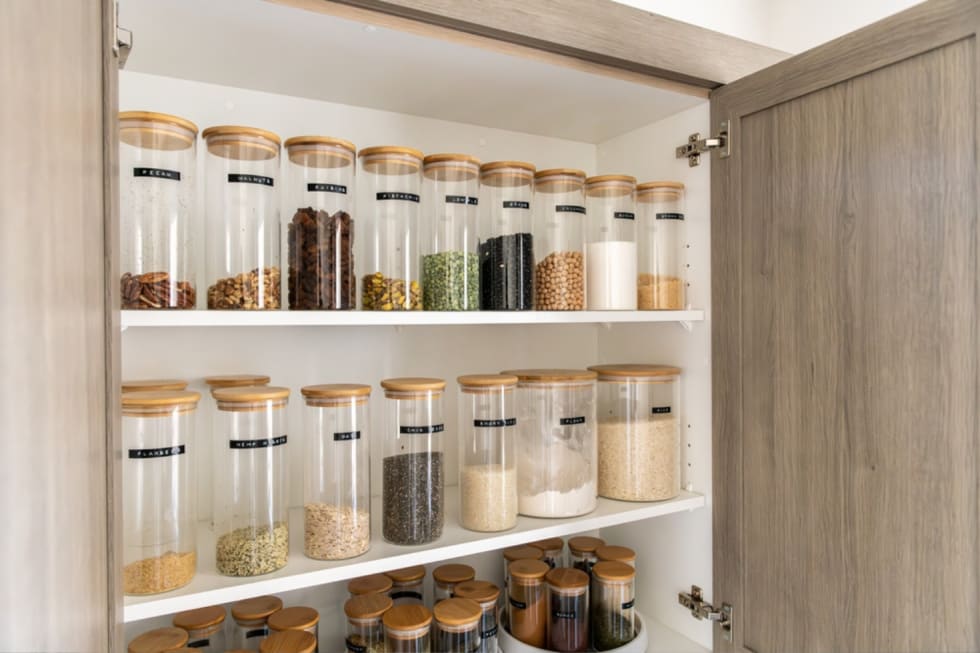
A well-stocked pantry is your secret weapon for whipping up delicious meals on a budget. For new renters, figuring out what goes into that toolbox can be a bit of a puzzle, which is why we’ve got a list of pantry staples that will form the backbone of countless meals.
First things first, let’s talk about the basics: rice and pasta. These versatile carbs are the starting point for a myriad of dishes, from stir-fries to casseroles. Canned beans are another must-have, ready to bulk up salads, soups, and tacos with protein and fiber. Don’t forget about sauces and spices—a few carefully chosen flavors can transform your cooking from bland to grand. And of course, cooking oils (like olive or canola) are essential for everything from sautéing veggies to dressing salads.
Now, what can you do with these staples? The possibilities are truly endless. Rice can be the base for a comforting bowl of fried rice or a side for a curry. Pasta pairs beautifully with a simple tomato sauce or can be tossed with olive oil and garlic for an easy meal. Beans can become the star of a hearty chili or a smooth, creamy dip. And with a collection of spices, you can travel the culinary world without leaving your kitchen.
Storing Your Pantry Goods
To keep your pantry staples fresh and ready to use, proper storage is key. Most dry goods like rice and pasta should be kept in airtight containers in a cool, dry place. Canned goods have a longer shelf life but should be used within a year for the best quality. As for spices, they tend to lose their potency over time, so buy in small amounts and store them away from heat and light.
Fresh Produce: How Do I Keep My Fridge Full of Healthy Options?
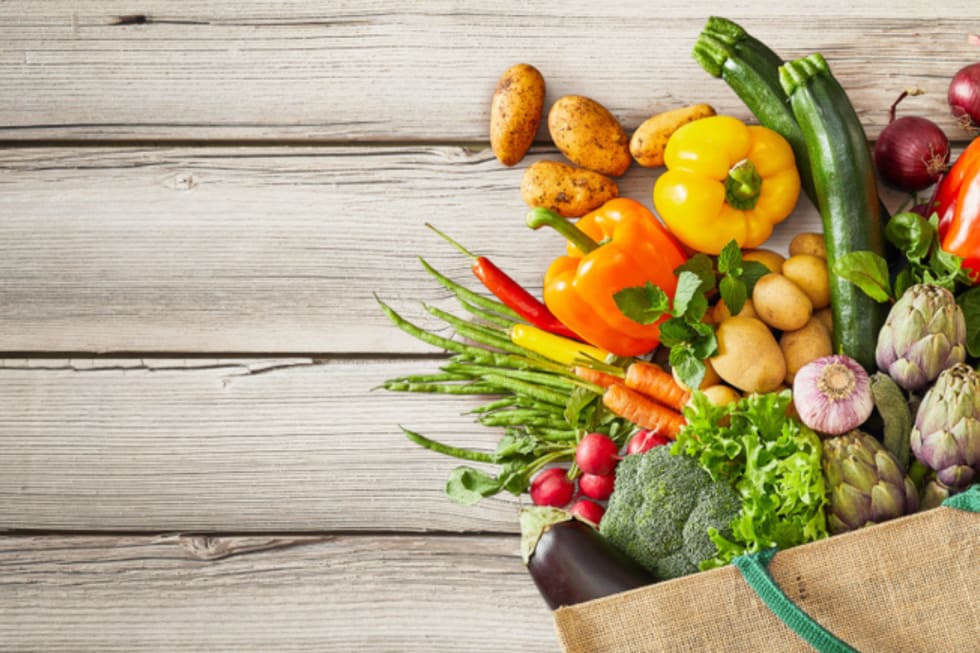
Keeping your fridge full of fresh produce not only adds a splash of color to your kitchen but also packs a nutritional punch that can energize your day and keep you healthy. Fruits and vegetables are essential components of any diet, offering a rich source of vitamins, minerals, fiber, and antioxidants. These nutrients support your body’s wellness, from boosting your immune system to improving your digestive health.
When it comes to stocking up, variety and seasonality are your best friends. Aim for a rainbow of colors to ensure you’re getting a wide range of nutrients. Some staples include:
- Fruits: Bananas for a potassium boost, apples for fiber, oranges for vitamin C, and berries for antioxidants.
- Vegetables: Leafy greens like spinach and kale for iron, sweet potatoes for vitamin A, broccoli for vitamins C and K, and carrots for beta-carotene.
PRO TIP: Embrace seasonal produce and enjoy better taste, nutritional value, and greater affordability.
Storing Your Fruits and Veggies
To maximize freshness, minimize waste, and keep pests like ants and cockroaches away, proper storage is crucial. Here are a few tips:
- Fruits: Most fruits do best stored in the fridge, except for bananas, melons, and tomatoes until they ripen.
- Vegetables: Keep leafy greens in airtight bags with a paper towel to absorb excess moisture. Store onions and potatoes in a cool, dark place but not together, as they can make each other spoil faster.
Proteins: Which Ones Should I Stock Up On?
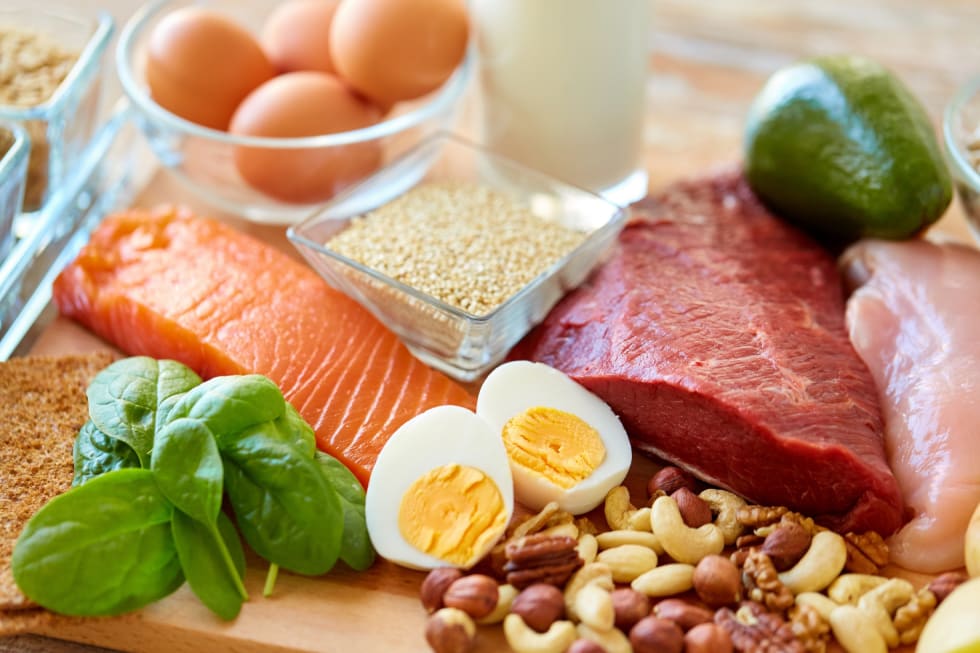
Protein is the cornerstone of any nutritious diet, playing a pivotal role in building muscle, repairing tissue, and supporting overall health.
For those who enjoy meat, chicken breasts and ground turkey offer versatile and lean protein options that can be the star of grilled, baked, or stir-fried dishes. They’re not only packed with protein but also provide a blank canvas for a variety of seasonings and marinades.
If you’re looking to incorporate more omega-3 fatty acids into your diet, salmon and tuna are tasty choices that support heart health.
Vegetarians and vegans, there’s plenty for you too! Tofu and tempeh are excellent plant-based proteins that absorb flavors well, making them perfect for a wide range of recipes. And let’s not overlook beans and lentils, the pantry staples that can add both protein and fiber to any meal, from hearty soups to fulfilling salads.
Meal Ideas to Kickstart Your Protein-Rich Diet:
- Enjoy a Grilled Chicken Salad with mixed greens, cherry tomatoes, and a light vinaigrette.
- Whip up a comforting bowl of Spaghetti with Lean Ground Turkey and homemade tomato sauce.
- Try a Stir-Fried Tofu with a medley of your favorite vegetables over a bed of brown rice.
- Savor Salmon Tacos with a fresh avocado salsa for a quick and healthy dinner.
- Cook a warming Lentil Soup with vegetables for a filling and nutritious meal.
Of course, these are just the tip of the iceberg, as with the right staples, the possibilities are endless.
Dairy and Eggs: What Are My Essentials?
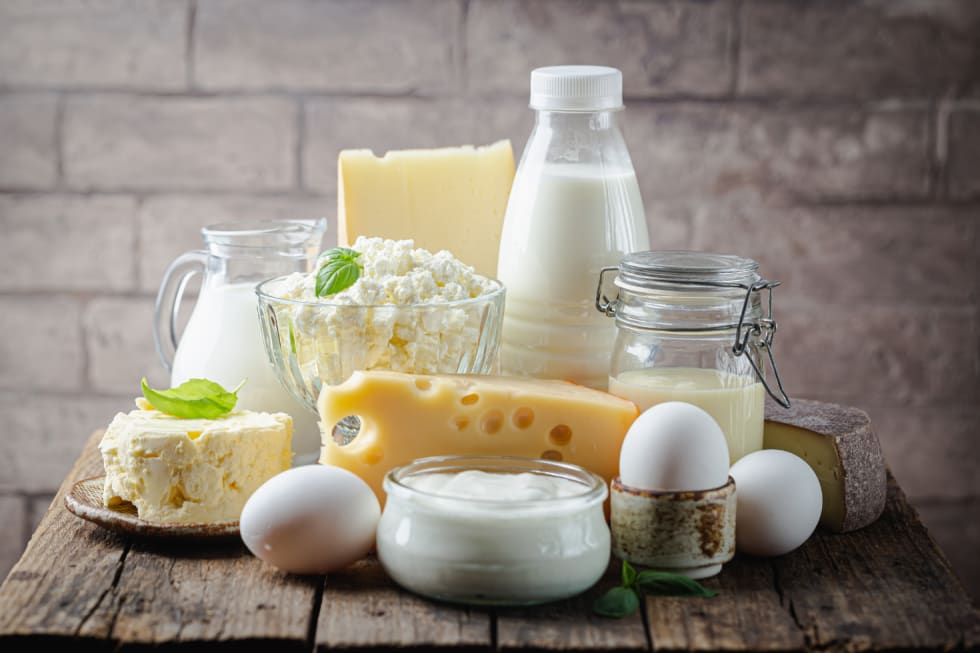
Whether you’re whipping up a quick omelet for breakfast, adding a splash of milk to your morning coffee, or grating some cheese over your pasta, dairy and eggs are indispensable for both cooking and snacking.
Here are the dairy essentials you should always have in your fridge:
- Milk: Perfect for cereals, beverages, and baking. For those with dietary restrictions, almond, soy, and oat milks are great alternatives.
- Eggs: Beyond breakfast, eggs can be used in baking, as a protein source for meals, or even in making homemade mayonnaise.
- Cheese: A variety of cheeses can add depth to your dishes. From sharp cheddar to creamy goat cheese, there’s a type for every taste. Vegan cheese options are also available for those avoiding dairy.
- Yogurt: Ideal for breakfasts, smoothies, or as a base for dips and sauces. Greek yogurt is a protein-rich option, while coconut yogurt serves as a delicious dairy-free alternative.
Now, let’s get creative with how you can use these items in your everyday meals:
- Breakfast Parfait: Layer yogurt with granola and fresh fruit for a quick and nutritious start to your day.
- Cheesy Vegetable Omelet: Beat a couple of eggs and pour them into a hot pan, then add sautéed vegetables and a sprinkle of cheese for a filling breakfast or brunch.
- Homemade Pizza Night: Use your favorite cheese to top homemade pizza dough, along with tomato sauce and your choice of toppings.
- Creamy Pasta Sauce: Mix some grated cheese into warmed milk or a dairy-free alternative for a simple, creamy pasta sauce.
Whether you choose to stick to the classics or experiment with dairy-free alternatives, these essentials will keep your meals interesting and satisfying!
Snacks and Beverages: What Are Some Healthy Options?

Snacking smart is your secret weapon for conquering hunger pangs without derailing your balanced diet. When living the apartment lifestyle, it’s crucial to have an arsenal of healthy snacks for apartment living that are both satisfying and nutritious.
Healthy Snack Staples: Keep your pantry loaded with options like whole-grain crackers, a variety of nuts, and seeds, along with dried fruits.
Feeling creative? Craft your unique snack mix. Imagine the delightful crunch of almonds mingled with the sweet tang of dried cranberries, all topped off with a sprinkle of dark chocolate chips - a true treat for the senses!
Beverage Boosts
The journey to hydration doesn’t have to be a dull one. Sidestep the sugary traps of sodas and energy drinks and immerse yourself in the world of unsweetened teas. From the calming embrace of green tea to the aromatic allure of herbal blends, these beverages are your hydration heroes.
For a twist of fun, why not infuse your water with vibrant slices of fruits or even cucumber? It’s an effortlessly refreshing way to keep your hydration levels up and your taste buds intrigued.
Frozen Foods: What Should I Keep in My Freezer?

Frozen foods often get a bad rap, but when you’re living the apartment life, they can be your secret weapon. The trick is to choose wisely and avoid options heavy on added sauces or sugars.
Here’s a shout-out to the freezer essentials for easy meals that you should always have on hand:
- Vegetables: Frozen veggies like broccoli, spinach, and mixed peppers are flash-frozen at their peak, meaning they retain nutrients and are ready to throw into stir-fries, soups, or as sides.
- Fruits: Berry mixes, mango chunks, and even avocado slices are great for smoothies, toppings for oatmeal, or as a natural sweetener for yogurt.
- Protein: Frozen shrimp thaws quickly and cooks in minutes, making it a perfect protein to elevate any meal. Skinless chicken breasts or fish fillets are also excellent for batch cooking.
- Bread: Freeze slices of whole-grain bread to ensure you always have a healthy option for toast or sandwiches.
- Meals: For those nights when cooking just isn’t going to happen, keep a couple of healthier frozen meal options on hand. Look for ones with whole-food ingredients and lower sodium content.
Incorporating these frozen ingredients into your meals couldn’t be easier. For example, start your day with a smoothie by blending frozen fruits with a scoop of protein powder and a dash of almond milk. Whip up a quick stir-fry with frozen veggies, shrimp, and a sauce made from pantry staples. Or save time on meal prep by using frozen grains like quinoa or brown rice as the base for your dishes.
Bakery and Bread: What Should I Look For?
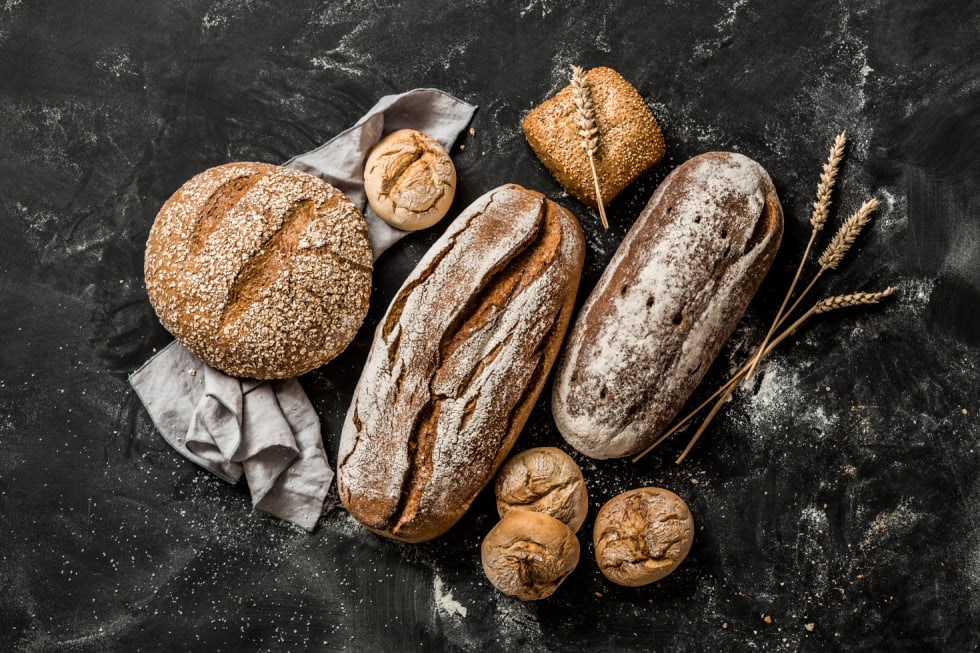
When it comes to stocking your new apartment’s kitchen with bakery items and bread, the aisle can be a maze of choices. The key is to veer towards whole-grain options, which pack a nutritional punch compared to their refined grain counterparts.
Here’s a list of bakery items you’ll want to include on your grocery list:
- Whole Wheat Bread: Look for loaves with “whole wheat” or “whole grain” as the first ingredient. These options contain more fiber and nutrients than white bread.
- Whole-Grain Tortillas: Perfect for wraps, burritos, or even a quick pizza base. They’re versatile and a must-have for quick meals.
- English Muffins: Opt for whole-grain varieties for a nutritious start to your day. They’re great toasted with a smear of avocado or your favorite nut butter.
- Pita Bread: Whole-grain or whole wheat pita pockets are great for sandwiches or even making your own pita chips.
To keep these products fresh for longer, storage is key. Bread tends to go stale quickly, especially when left out. If you consume bread slowly, consider freezing it.
Condiments, Oils, and Spices: How Can I Flavor My Meals?
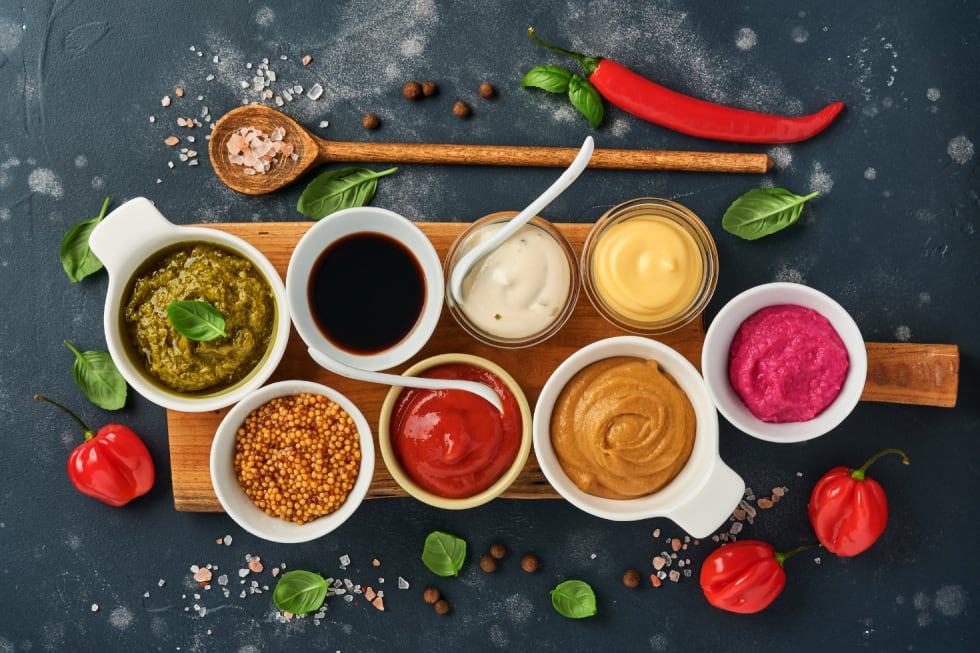
Flavoring your meals can often feel like a daunting task, especially when you’re trying to keep things healthy and not rely too heavily on fats or sodium.
Luckily, there are plenty of condiments, oils, and spices that are capable of transforming even the simplest of ingredients into a feast for your taste buds without the health risk.
Essential Oils: A high-quality olive oil is a must for dressings, drizzling over dishes, or for sautéing at lower temperatures. Canola or vegetable oil is great for high-heat cooking and baking. And for an Asian twist, sesame oil can add a nutty flavor to stir-fries and salads.
Must-Have Condiments: Start with the basics – ketchup, mustard, and soy sauce. These provide a solid foundation for many recipes. For a healthier spin, opt for low-sodium soy sauce and sugar-free ketchups.
Spices That Speak Volumes: Every kitchen should be stocked with a variety of spices. Begin with salt (preferably sea salt or Himalayan pink salt) and black pepper, then branch out to garlic powder, chili powder, cumin, and oregano. These spices cover a broad spectrum of cuisines and can add depth to any dish.
Now, how can you incorporate these into your meals? Consider a simple grilled chicken breast. It can go from bland to grand with a sprinkle of salt, pepper, and cumin, finished with a drizzle of olive oil and a squeeze of lemon juice. Or take roasted vegetables to the next level by tossing them in olive oil, garlic powder, salt, and pepper before baking.
Whipping Up Your Own Condiments
And for those of you who love to get creative in the kitchen, try making your own condiments!
For example, homemade salsa is a breeze to make and far surpasses store-bought versions in both flavor and healthiness. Simply combine diced tomatoes, onions, cilantro, lime juice, salt, and a jalapeño if you like the heat. It’s perfect for dipping, topping grilled meats, or adding to tacos.
Conclusion
Now that you’ve got your essential grocery shopping list ready, it’s time to find the perfect kitchen to stock up!
Our AI-powered apartment-finding platform makes it simple to find a home that suits not just your culinary needs but all your preferences. Whether you need a spacious kitchen for your cooking adventures or a location close to the best grocery stores, we can help you find the ideal apartment. Embark on your culinary journey in a home that fits perfectly with your lifestyle. Start searching now!




